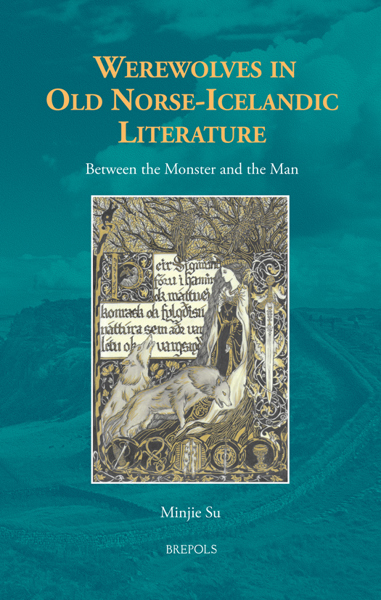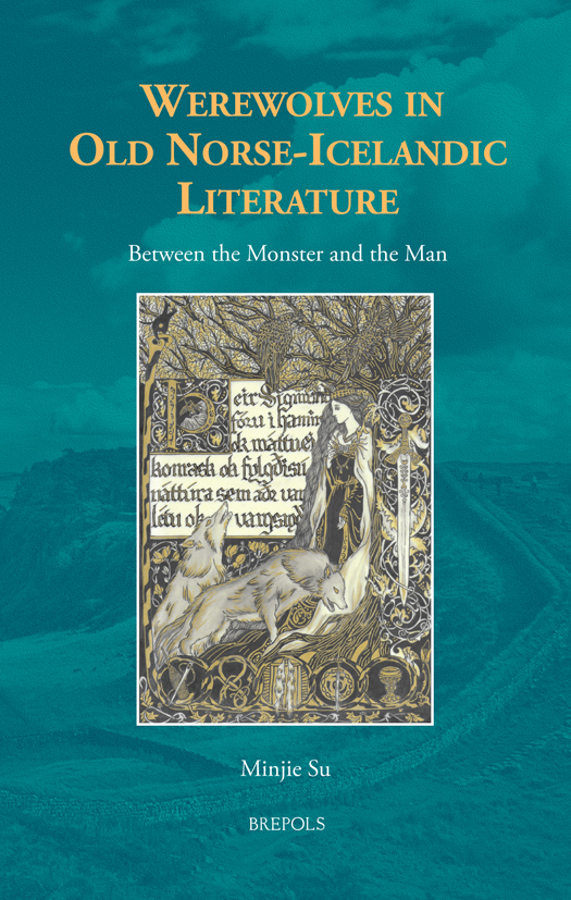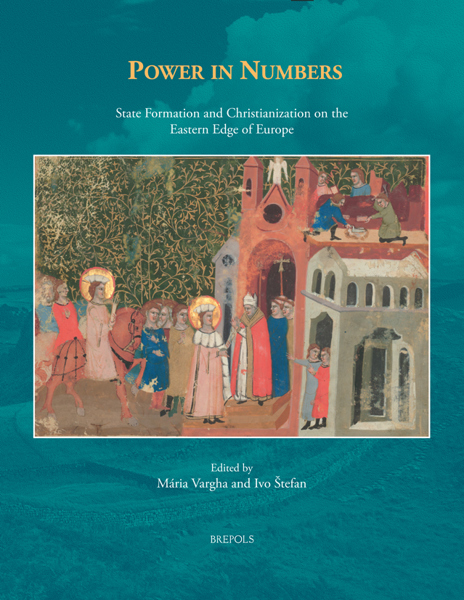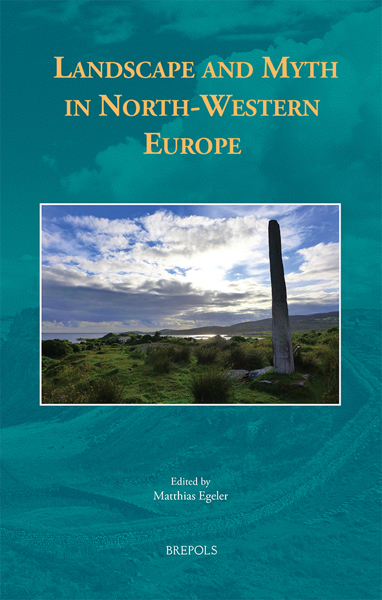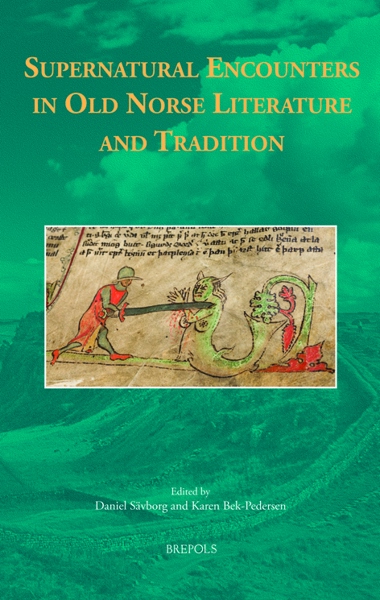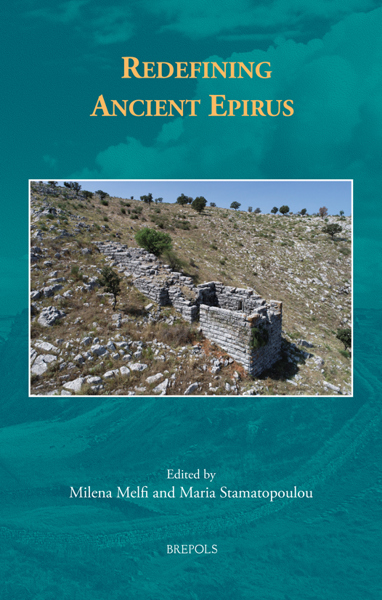
- Pages: 227 p.
- Size:156 x 234 mm
- Illustrations:13 b/w
- Language(s):English
- Publication Year:2023
- € 80,00 EXCL. VAT RETAIL PRICE
- ISBN: 978-2-503-59600-6
- Hardback
- Available
- € 80,00 EXCL. VAT RETAIL PRICE
- ISBN: 978-2-503-59601-3
- E-book
- Available
“Minjie Su’s presents a compelling argument about the nature and role of werewolves in Norse-Icelandic literature and sagas. Su collects and examines the surviving Norse-Icelandic werewolf narratives and approaches them through a number of interesting and varied lenses, leading to a unique and comprehensive analysis.” (Chris White, in Parergon, 40/2, 2023, p. 240)
“This book is essential reading for any student or scholar interested in wolf transformations in Old Norse-Icelandic literature, but also for those more generally interested in romances, the permeability and insecurity of the body and its humanity, and the roles of stories in communities and intergenerational knowledge exchange. It demonstrates the value of exploring into, around and beyond the wolf in transformation narratives (…) The value of this work lies in its open-mindedness: both in its willingness to approach the werewolf figure with a range of theoretical models, and to consider both the body and the place of the body in its discussions of identity, becoming and belonging.” (Harriet J. Evans Tang, in SAGA-BOOK, XLVII, 2023, p. 53)
“Werewolves in Old Norse-Icelandic Literature is an important addition to recent studies of the paranormal in medieval Icelandic literature and beyond, and will be of relevance to everyone who is interested in conceptualisations of identity and alterity, the boundaries between humans and their “Others” (both animals and monsters), and questions of morality and acceptable behaviour in medieval literature.” (Rebecca Merkelbach, in The Medieval Review, 09/08/2024)
"Su’s work succeeds admirably in what it sets out to do, enriching and advancing the study of Old Norse-Icelandic werewolf narratives immensely while also opening up ‘new dialogues and … new directions’ (p. 204) for others to pursue." (Katherine Marie Olley, in Medium Aevum, XCIII/1, 2024, p. 194)
"Su’s book is indeed transformative not just in its exploration of the metamorphosis at the heart of the figure of the werewolf but also in its opening up of the field of Old Norse-Icelandic literary studies to a very wide range of new analytical and comparative approache. (...) the true value of this book lies in its contribution not just to the study of werewolves themselves but even more so to the study of gender, emotions, landscape, disease, medicine, and, of course, humanity in the medieval world." (Ashley Castelino, Ceræ, 11, 2024, p. 156-159)
"Su’s insights, which she achieves through extended close readings, at times approach brilliance. (...) Su’s monograph is a testament to the multitude of ways scholars might continue to ask of medieval literature, in new and compelling ways, 'what does it mean to be human?' (p. 197)." (Lauren Poyer, in Journal of English and German Philology, 124(1), 2025, p. 118-119)"
Minjie Su has recently completed her DPhil (English) from the University of Oxford; her research focuses on the Old Norse-Icelandic werewolf literary tradition and, more broadly, the supernatural in the legendary and the romance genres.
At the heart of any story of metamorphosis lies the issue of identity, and the tales of the werwulf (lit. ‘man-wolf’) are just as much about the wolf as about the man. What are the constituents of the human in general? What symbolic significance do they hold? How do they differ for different types of human? How would it affect the individual if one or more of these elements were to be subtracted?
Focusing on a group of Old Norse-Icelandic werewolf narratives, many of which have hitherto been little studied, this insightful book sets out to answer these questions by exploring how these texts understood and conceptualized what it means to be human. At the heart of this investigation are five factors key to the werewolf existence —skin, clothing, food, landscape, and purpose — and these are innovatively examined through a cross-disciplinary approach that carefully teases apart the interaction between two polarizations: the external and social, and the interior and psychological. Through this approach, the volume presents a comprehensive new look at the werewolf not only as a supernatural creature and a literary motif, but also as a metaphor that bears on the relationship between human and non-human, between Self and Other, and that is able to situate the Old-Norse texts into a broader intellectual discourse that extends beyond medieval Iceland and Norway.
Introduction
Werewolves in Old Norse-Icelandic Literature
Werewolves in the Franco-Latin Tradition
Texts in Focus
Goals and Structure
Chapter 1: Þeir fóru í hamina
The Werewolf’s Skin
The Skin’s Position in Werewolf Literature
The Skin’s Position in the Appearance-Essence Binary
The Skin of the Old Norse-Icelandic Werewolves
Ála flekks saga: A Case Study
From lupus to leprosus
Chapter 2: Klæddr eða Nokkuiðr
The Werewolf’s Clothing and the She-Wolf
The Clothes–Body Dynamics: The Man-Wolf
The Clothes–Body Dynamics: The Metaphorical She-Wolf
Dress: Definition, Classification, Function
From Naked to Clothed: The Knight
From Clothed to Naked: The Lady
Chapter 3: Et ek þeirra hold
The Werewolf’s Food and Food Taboo
What and How Does a Wolf Eat?
Food and Taboo: What Werewolf Does or Does not Eat
Tabooed Food and Tabooed Sex: The She-Wolf’s Appetite
The Scale of the Werewolf’s (Possible) Food: The Acceptable
The Point of No Return: Human and Horse Flesh
Chapter 4: Á skóg með hryggðum
The Werewolf’s Landscape and Mindscape
Theories and Tools: The Foundation
Mapping the Werewolf’s Mindscape: An Overview
Úlfhams rímur: A Tale of Generations
Úlfhams rímur: Dark Land, Dark Mind
Chapter 5: From Monstratus to Monstrare
The Werewolf’s Purpose
Classification of the Characters
(Were)wolf as Learner: monstratus
The Disguised Hero as Learner/monstratus, or the Werewolf’s Pupil
Wolf as Teacher: monstrare
The Konungs skuggsjá Werewolves: The Foundations
The Konungs skuggsjá Werewolves: Teaching (of) the Wolf
Conclusion
What Can We Learn from the Wolf?
Works Cited
Index
